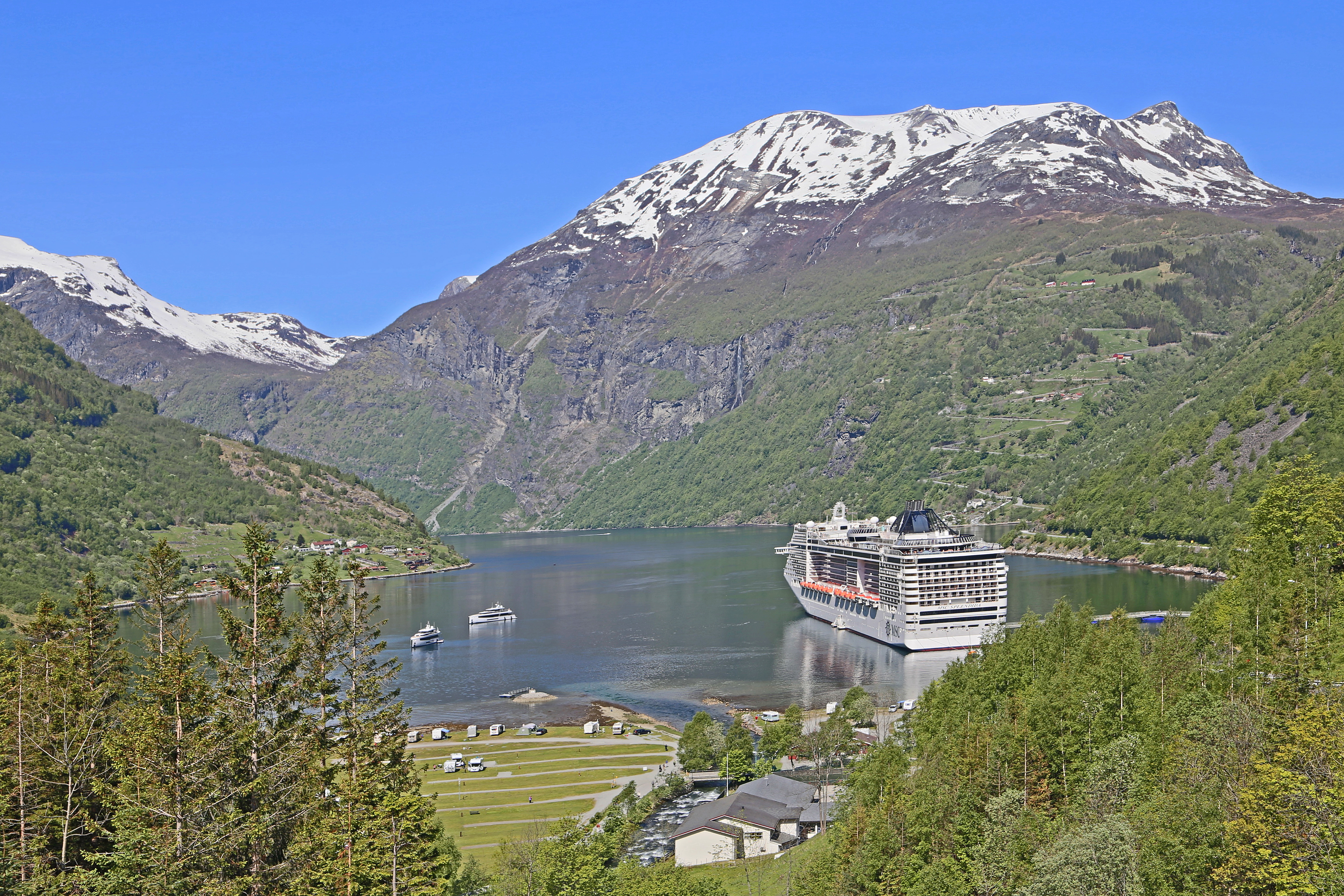Geiranger Fjord, located in Møre og Romsdal county, Norway, is a UNESCO World Heritage site renowned for its stunning natural beauty and dramatic landscapes. The fjord stretches approximately 15 kilometers and is one of the most iconic fjords in the world, famous for its deep blue waters, steep cliffs, and cascading waterfalls such as the Seven Sisters and the Suitor. These breathtaking waterfalls are not only mesmerizing but also hold cultural stories tied to the region's folklore.
The fjord's historical significance is intertwined with Norway's maritime and agricultural heritage. The small village of Geiranger at the fjord's head is a testament to the resilience of local communities in adapting to challenging terrains. The road to Geiranger, the Ørnevegen (Eagle Road), and the Trollstigen pass offer spectacular views and are engineering marvels in themselves, reflecting the ingenuity required to survive and thrive in such environments.
Culturally, Geiranger Fjord has inspired countless works of art, literature, and music, capturing the imagination of artists and travelers alike. It is often seen in tourism materials promoting Norway's natural wonders and has become a symbol of the country's pristine nature.
A notable landmark in the area is the Geiranger Skywalk at Dalsnibba, which offers panoramic views of the fjord and surrounding mountains. Another significant site is the Flydalsjuvet viewpoint, popular for its extraordinary vistas and photographic opportunities.
The climate in Geiranger Fjord is characterized by cold, snowy winters and mild summers, influenced by the surrounding mountains and proximity to the sea. This climate supports a diverse range of flora and fauna, adding to the region's ecological value.
Geiranger hosts several events, particularly during the summer months, but it is the natural scenery that remains the primary attraction. The annual Fjord Cruise season allows visitors to experience the majesty of the fjord from the water, adding to the understanding and appreciation of its scale and beauty.
Interesting trivia about the area includes the fact that Geiranger Fjord was carved by glaciers during the last Ice Age, creating its steep walls and unusual depth. Geiranger Fjord's fame also extends into popular culture, having been depicted in various films and documentaries intent on showcasing its remarkable and otherworldly landscapes.
 W. Bulach , CC BY-SA 4.0, via Wikimedia Commons
W. Bulach , CC BY-SA 4.0, via Wikimedia CommonsNorwayEurope
Nearby Places
Trollstigen(50 km)
Dramatic mountain road with hairpin turns, steeped in folklore and surrounded by stunning fjord landscapes.Trollkirka Caves(88 km)
Marble cave system with river, steeped in local folklore and stunning natural beauty.Bergen(212 km)
Historic port city with colorful wooden houses and funicular.Trolltunga(221 km)
Dramatic cliff overlook above Norwegian fjordLog in to write a review.
Sustainable Travel Tips
Plan Mindfully
- Choose direct flights when possible
- Travel during off-peak seasons
- Pack light and bring reusables
- Prefer eco-friendly accommodations
At Your Destination
- Use public transport or walk
- Support local businesses
- Respect wildlife and habitats
- Choose activities with minimal impact
Daily Habits
- Reuse hotel towels
- Take shorter showers
- Turn off lights/AC when out
- Carry a reusable water bottle
